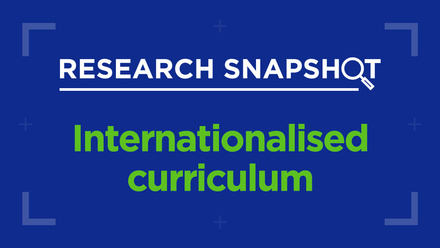Managing risk in uncertain times

In the best of times, risk management asks us to gaze into our crystal ball and predict what the future may bring – but the challenge of uncertainty brought about by COVID-19 brings it to a whole new level. Continuing with Forum Week and the launch of Winter Forum on ‘Resilience in uncertain times’, this look at one Turkish institution's approach to using online tools to mitigate a whole host of risks serves as an example others can draw on during the pandemic and the increasingly unpredictable future.
How fast can we adapt to changes beyond our control? As students and staff at universities during the COVID-19 crisis, we’ve learnt the answer the hard way and are still struggling to deal with the uncertainties brought about by the pandemic. What has happened around the world during the past half-year has gone beyond any considerations even in the best risk management strategies. We may not be able to change the uncertainties around coronavirus-related issues in the near future, but we can identify the problems and produce solutions. To improve our risk management – the process of identifying possible risks, problems or disasters before they happen – we have analysed the hazards faced during the pandemic at our institution in Turkey and throughout the country.
The day after COVID-19 was declared a pandemic by the World Health Organization, the Turkish government suspended education at all universities in Turkey for about three weeks. Almost all institutions resumed their spring semester courses on various virtual learning platforms on 23 or 30 March. Before the pandemic, virtual learning in Turkish higher education, (as in many parts of the world) had been improving, but the progression was slow and there were huge differences between institutions. While some had made serious investments in virtual learning, others had not even gotten started. Following the government’s decisions on dealing with the pandemic, however, all universities in Turkey were forced to resume education via virtual learning. All students and academic staff had to adapt to this and deal with problems as they emerged.
What is devastating in one field or one way of life can be constructive in another
The problems encountered in higher education during the pandemic vary from global, national and institutional levels to personal levels, but in this post, we focus on five aspects that have had a direct impact on students and are important in terms of future risk management.
1. Digital needs
As virtual learning was launched by all higher education institutions, it was assumed that students had or could obtain the required digital resources on their own. Unfortunately, this has not been the case for all students: their computers or mobile phones might not have the necessary technical requirements or accessories, or students might not even have these devices. The most common issues are related to internet connectivity or capacity limitations as students follow synchronous or recorded classes.
Universities have provided their students and academics with the options of cloud platforms for video and audio conferencing, chat webinars and learning management systems. According to a survey conducted by Turkey’s Council of Higher Education, the most common platforms used are Zoom, Microsoft Teams and BigBlueButton. The most popular learning management systems are Moodle, ALMS, Blackboard, Canvas, Sakai and Edmodo. This has tended to work to the benefit of international students as these systems were already in use for international programmes.
2. Peer learning
Education is not limited to the lectures given in a classroom. It is supported by the informal learning that emerges from interactions between students outside the classroom: peer learning is an important supplement to official education. Responses to the survey from students regarding peer learning were mixed. Some students said they spent their time alone and did not benefit from this type of learning. Others stated that virtual learning saved them time that they then used to discuss projects with their classmates and perform teamwork studies in the virtual environment. Some went further, saying that they had more group meetings now than before the pandemic.
3. Guidance
Students have tended to tolerate the problems resulting from the crisis as long as they have been kept involved and informed. Continuous communication and guidance can support their resilience. This was lacking in the beginning of the pandemic period, when the authorities were unsure about the situation. But after a few weeks of uncertainty, the Council of Higher Education used its authority to guide institutions effectively. Revised academic calendars were announced in a timely fashion to all students, academics and administrative personnel. Almost all communications have been carried out online, and flexible options have been provided for students who want to freeze their studies. Students have used virtual learning environments provided by their universities and social media to communicate with their teachers – in this way, digital channels have helped communication to flow smoothly.
4. Finance, social life and health
Because of the requirements and arrangements following the pandemic announcements, students have been faced with unexpected expenses related to travel, digital needs, accommodation (including being asked to vacate dormitories), health concerns and protective measures. The continuation or termination of scholarships is another issue affecting students’ income.
Meanwhile, the lack of a social life has led to isolation and feelings of loneliness. This has been partially offset by the fact that students were already accustomed to socialising digitally. International students specifically are more resilient because they naturally develop strong social skills to adapt to change and new environments, as well as to get over mental isolation and loneliness.
Regarding physical illnesses, all students are covered by the state health insurance system. It is totally free in Turkey to get medical treatment in case of virus infection, regardless of whether the hospital is state-owned or private. International students are not an exemption to this policy. Nevertheless, some aspects related to psychological health and long-term effects are still unknown: for example, this period may cause disorders such as anxiety and depression.
5. Disabilities
Disabled students need additional support to adapt to changes. Specific measures are required to address their needs and ensure their access to virtual learning. Universities have tried to take the needs of disabled students into account on a case-by-case basis. Measures have depended on the type of disability, such as providing transcripts of both synchronous and asynchronous lectures for students with hearing impairments.
What is devastating in one field or one way of life can be constructive in another: this is called the Schumpeterian shock. The COVID-19 crisis has tragically resulted in more than half a million casualties and the downturn of economies worldwide. But in the internationalisation of education, it has also brought about a huge and fast adaptation to virtual learning that could not otherwise have happened at such a high speed and at the same time all over the world. The changes and difficulties that we have experienced should be analysed in order to develop solid risk management policies, but we should also make the most of the new opportunities and digital advances in international education that have been fast-tracked during the pandemic.






